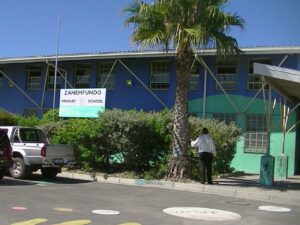In the early hours of Tuesday morning (local time in Florida), SpaceX launched their Falcon Heavy rocket from Kennedy Space Centre.
The rocket launch, which was billed by Elon Musk as the “company’s most difficult ever”, carried a number of technologies that seek to change space travel as we know it.
We’re talking about the atomic clock, a “green” type of propellant, and the LightSail 2, a vehicle equipped with a very thin sail that aims to use the sun’s energy to propel itself through the cosmos.
The mission, known as the STP-2 mission, had a successful launch, with this from BusinessLIVE:
The boosters separated safely as the craft began its six-hour mission to deploy the satellites.
The two-side booster rockets returned safely to Earth, landing on adjacent Air Force landing pads, but the rocket’s centre booster missed its mark, crashing into the Atlantic ocean.
Musk, who predicted trouble with landing the centre booster on SpaceX’s drone ship in the Atlantic, said on Twitter early on Tuesday, “It was a long shot.”
The mission, dubbed Space Test Programme 2 (STP-2), is the third for the Falcon Heavy rocket, which SpaceX describes as the most powerful launch system in the world.
Pity about the rocket’s centre booster, but you can’t win them all. Just try and retrieve the thing, because there’s enough plastic rubbish in the ocean.
Let’s see the moment the Falcon Heavy took to the sky:
Via Ars Technica, some photos from the launch:
There’s a lot going on in this photo: booster engine cut-off, side-booster separations, boost-back of the side boosters as they go up and back towards the landing zone. The Falcon Heavy center core is the center streak, while the boosters split off and go up and back.

It boosted 24 satellites into three different orbits

Let’s double back to that centre booster that missed its landing, with this from Science Alert:
A core part of a SpaceX rocket narrowly missed a landing pad, crashed into the sea, and exploded…
It launched with three reusable boosters, two of which made it back to earth in one piece…the third, the central booster, was not as successful.
The central core booster narrowly missed SpaceX’s floating platform, known as ‘Of Course I Still Love You’. Instead it crashed into the sea and appeared to explode.
You can’t see much detail, but here’s a video of the near miss:
slowed down version, definitely full on sideways pic.twitter.com/SY7V3gR5ZB
— LaunchStuff (@LaunchStuff) June 25, 2019
How about these cracking images via Twitter…
The stunning #SpaceX Falcon Heavy STP-2 launch ‘nebula’ captured from the roof of #NASA‘s Vehicle Assembly Building––525ft up.
From @erikkuna for @SuperclusterHQ
Congrats to @SpaceX & @elonmusk on a thrilling launch#spaceisforeveryone pic.twitter.com/wnNssxRyvV
— Supercluster (@SuperclusterHQ) June 25, 2019
Wow, wow, wow!
SpaceX’s Falcon Heavy rocket launched the STP-2 mission at 2:30am this morning. The two side cores, flying their second mission, returned to land successfully at Cape Canaveral.
It was incredible. Simply incredible. pic.twitter.com/wCgj06k8sk
— John Kraus (@johnkrausphotos) June 25, 2019
Yup, wow.
To finish, here’s the mission launch in its entirety:
[sources:businesslive&arstechnica&sciencealert]





